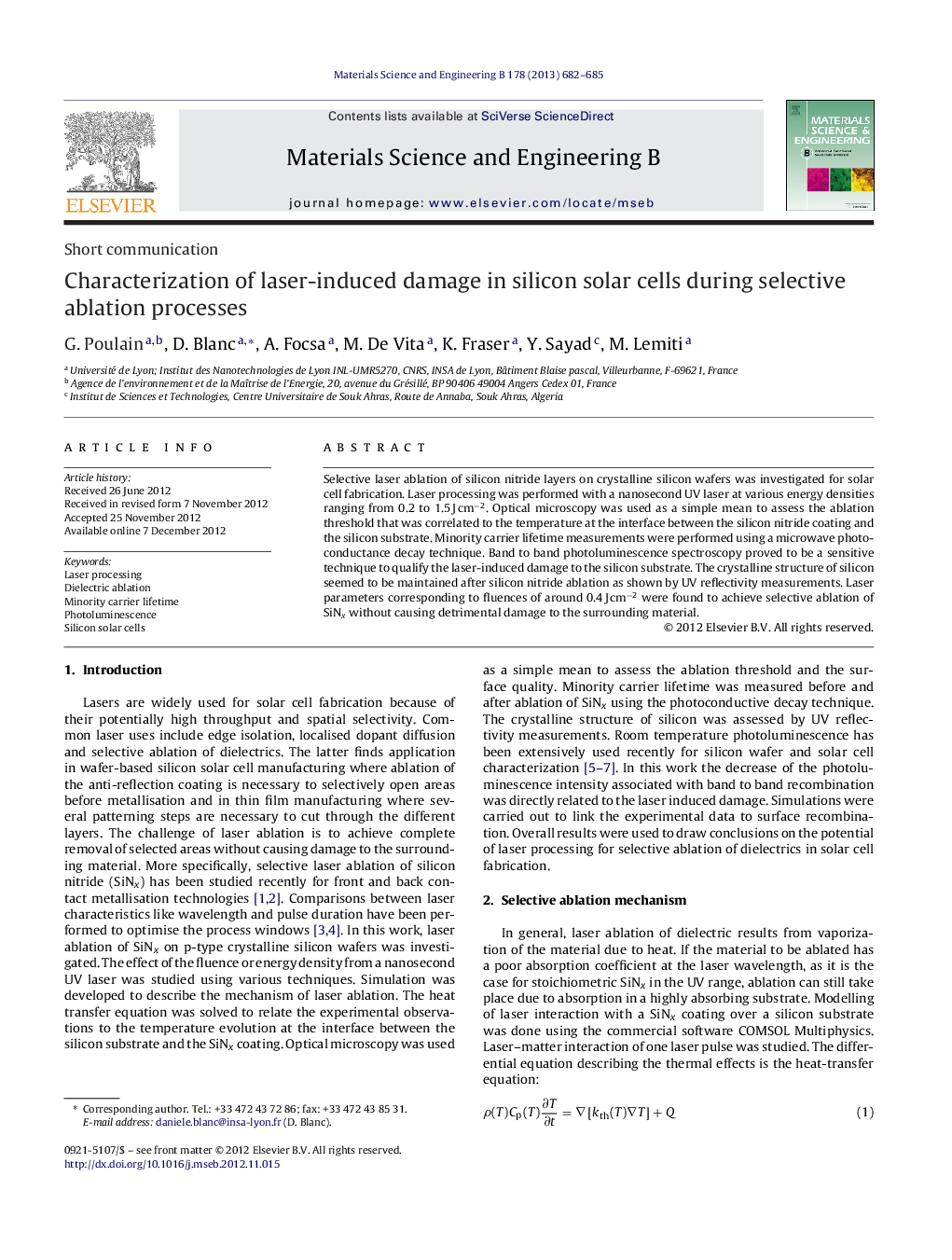| Article ID | Journal | Published Year | Pages | File Type |
|---|---|---|---|---|
| 10639902 | Materials Science and Engineering: B | 2013 | 4 Pages |
Abstract
Selective laser ablation of silicon nitride layers on crystalline silicon wafers was investigated for solar cell fabrication. Laser processing was performed with a nanosecond UV laser at various energy densities ranging from 0.2 to 1.5Â JÂ cmâ2. Optical microscopy was used as a simple mean to assess the ablation threshold that was correlated to the temperature at the interface between the silicon nitride coating and the silicon substrate. Minority carrier lifetime measurements were performed using a microwave photo-conductance decay technique. Band to band photoluminescence spectroscopy proved to be a sensitive technique to qualify the laser-induced damage to the silicon substrate. The crystalline structure of silicon seemed to be maintained after silicon nitride ablation as shown by UV reflectivity measurements. Laser parameters corresponding to fluences of around 0.4Â JÂ cmâ2 were found to achieve selective ablation of SiNx without causing detrimental damage to the surrounding material.
Related Topics
Physical Sciences and Engineering
Materials Science
Electronic, Optical and Magnetic Materials
Authors
G. Poulain, D. Blanc, A. Focsa, M. De Vita, K. Fraser, Y. Sayad, M. Lemiti,
